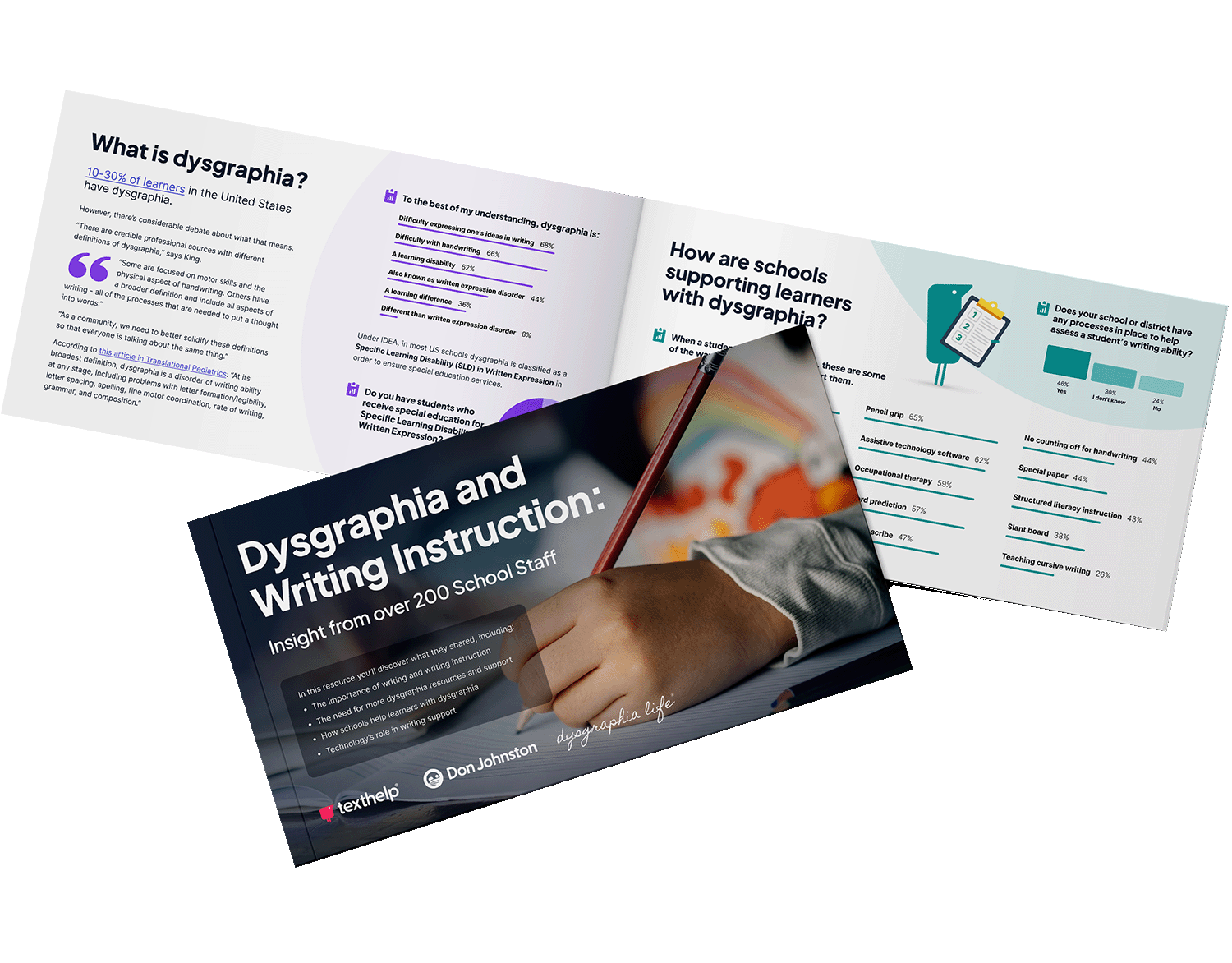10-30% of learners in the United States have dysgraphia.
However, there’s considerable debate about what that means.
"There are credible professional sources with different definitions of dysgraphia,” says King. “Some are focused on motor skills and the physical aspect of handwriting. Others have a broader definition and include all aspects of writing - all of the processes that are needed to put a thought into words.
As a community, we need to better solidify these definitions so that everyone is talking about the same thing."
Dysgraphia and Writing Instruction: Insight from over 200 school staff
We partnered with Dysgraphia Life to survey educators all over the country to better understand how their districts approach writing challenges.
Fill out a brief form to discover what they shared, including:
- The importance of writing and writing instruction
- The need for more dysgraphia resources and support
- How schools help learners with dysgraphia
- Technology’s role in writing support

Only 47% of respondents said that they have a specialist dedicated to teaching writing in their school or district.
“I think that writing, and goals related to writing are not created or implemented at the level reading and math goals are. I've had written expression SLD students without writing goals but were instead provided with reading goals. It is important for writing to be viewed as important as reading and math.”
